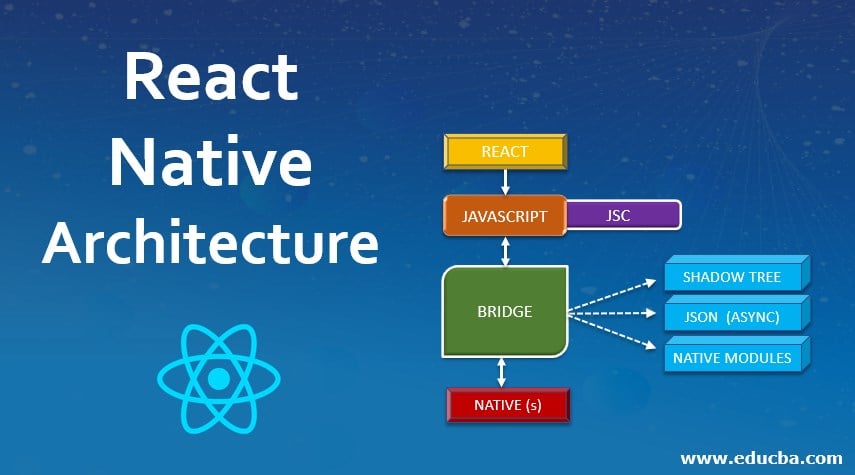The Evolution of Universal App Development: A Look at the Latest Expo News
In the ever-evolving landscape of software development, the quest for a single codebase that can power applications across multiple platforms remains a primary goal. React Native has long been a dominant force in this arena, and at the heart of its most accessible and powerful tooling is the Expo framework. Once perceived primarily as a learning tool, Expo has matured into a robust, professional-grade ecosystem capable of building, deploying, and maintaining complex, large-scale universal applications for iOS, Android, and the web. The latest Expo News isn’t just about incremental updates; it’s about a fundamental shift in how developers approach cross-platform development.
This article provides a comprehensive deep dive into the modern Expo stack. We’ll explore the paradigm-shifting features of Expo Router, which brings file-based routing from the web world of Next.js News and Remix News to the native landscape. We’ll uncover the power of Expo Application Services (EAS) for seamless builds and over-the-air updates. Furthermore, we’ll examine advanced state management patterns using libraries like Zustand News and React Query News, and discuss best practices for testing, styling, and performance optimization. Whether you’re a seasoned React Native developer or new to the ecosystem, this guide will equip you with the knowledge to leverage the latest advancements and build next-generation universal apps.
Section 1: The Core Paradigm Shift – Universal Routing with Expo Router
Perhaps the most significant piece of recent Expo News is the stabilization and widespread adoption of Expo Router. This library fundamentally changes how navigation is handled in React Native apps, aligning it with the intuitive, file-system-based routing that has become the standard in modern web development. This approach not only simplifies the developer experience but is also the cornerstone of building truly universal applications.
Understanding File-Based Routing
Instead of manually configuring a complex stack of navigators in a central file, as was common with React Navigation News, Expo Router uses the file and directory structure within your app/ directory to define your app’s routes. This declarative approach is easier to reason about and scales beautifully as your application grows.
app/index.jsmaps to the/route (your home screen).app/profile.jsmaps to the/profileroute.app/settings/notifications.jsmaps to the/settings/notificationsroute.app/users/[id].jscreates a dynamic route, where[id]is a parameter.
This structure is immediately familiar to anyone who has worked with frameworks like Next.js or Gatsby, making the transition between web and native development smoother than ever.
Layouts and Shared UI
A key feature of Expo Router is the concept of layouts. A file named _layout.js within a directory will wrap all child routes in that segment. This is perfect for defining shared UI elements like headers, tab bars, or authentication providers that should persist across multiple screens. For instance, a layout in app/(tabs)/_layout.js can define a tab navigator for all the screens within the (tabs) group.
// File: app/(tabs)/_layout.js
// This file defines a shared tab navigator layout for the main app sections.
import { Tabs } from 'expo-router';
import { FontAwesome } from '@expo/vector-icons';
export default function AppLayout() {
return (
<Tabs
screenOptions={{
tabBarActiveTintColor: 'blue',
}}
>
<Tabs.Screen
name="index" // This corresponds to app/(tabs)/index.js
options={{
title: 'Home',
tabBarIcon: ({ color }) => <FontAwesome size={28} name="home" color={color} />,
}}
/>
<Tabs.Screen
name="profile" // This corresponds to app/(tabs)/profile.js
options={{
title: 'Profile',
tabBarIcon: ({ color }) => <FontAwesome size={28} name="user" color={color} />,
}}
/>
</Tabs>
);
}This code snippet demonstrates how a simple layout file can configure a complete tab-based navigation structure, with each `Tabs.Screen` automatically linking to the corresponding file in the same directory.
Section 2: From Development to Production with Expo Application Services (EAS)

Building an app is only half the battle; deploying and maintaining it is where the real challenges often lie. Expo Application Services (EAS) is a suite of cloud services that streamlines this entire lifecycle, providing capabilities that were previously complex and time-consuming.
EAS Build: Your Cloud-Native Compiler
The original Expo “managed workflow” had a significant limitation: you couldn’t add custom native code. EAS Build shatters this barrier. It allows you to build your app in the cloud on Expo’s infrastructure, giving you a clean, reproducible environment for compiling your `ipa` (iOS) and `apk`/`aab` (Android) files. This means you can now incorporate any React Native library with native dependencies without ever needing to eject or manage complex Xcode and Android Studio configurations on your local machine.
Configuration is handled through a simple eas.json file in your project root, where you can define different build profiles for development, preview, and production.
// File: eas.json
// This file configures different build profiles for EAS.
{
"cli": {
"version": ">= 5.9.0"
},
"build": {
"development": {
"developmentClient": true,
"distribution": "internal",
"android": {
"buildType": "apk"
}
},
"preview": {
"distribution": "internal",
"ios": {
"simulator": true
}
},
"production": {
"ios": {
"image": "latest"
},
"android": {
"image": "default"
}
}
},
"submit": {
"production": {}
}
}In this example, the `development` profile creates a custom development client, allowing you to work with your native libraries in a live-reload environment similar to Expo Go. The `production` profile is optimized for app store submission.
EAS Update: Pushing Changes Over-the-Air (OTA)
One of the most powerful features of EAS is EAS Update. This service allows you to push JavaScript and asset updates directly to your users’ devices without requiring a new app store submission. This is invaluable for deploying critical bug fixes, making small UI tweaks, or A/B testing features in real-time. EAS Update is more robust and flexible than the classic `expo publish` system, offering channels, versioning, and gradual rollouts for safer deployments.
Section 3: Advanced State Management and Data Fetching Strategies
As your universal application grows in complexity, managing state and fetching data efficiently becomes critical. The React ecosystem offers a plethora of tools, and modern Expo apps are perfectly positioned to take advantage of the latest and greatest.
Modern Client State with Zustand
While Redux News dominated state management for years, many developers now favor lighter, less boilerplate-heavy solutions. Zustand News has emerged as a popular choice for its simplicity and minimal API. It uses hooks and provides a centralized store without requiring context providers to wrap your entire application.
Here’s how you can create a simple store to manage user authentication state:
// File: store/authStore.js
// A simple Zustand store for managing authentication state.
import { create } from 'zustand';
export const useAuthStore = create((set) => ({
user: null,
token: null,
isLoading: true,
login: (userData, authToken) => set({ user: userData, token: authToken, isLoading: false }),
logout: () => set({ user: null, token: null }),
setLoading: (status) => set({ isLoading: status }),
}));
// Usage in a component:
// import { useAuthStore } from '../store/authStore';
//
// function ProfileScreen() {
// const { user, logout } = useAuthStore();
// if (!user) return <Text>Not logged in.</Text>;
// return (
// <View>
// <Text>Welcome, {user.name}</Text>
// <Button title="Logout" onPress={logout} />
// </View>
// );
// }This approach is clean, concise, and provides excellent performance, as components only re-render when the specific state slices they subscribe to are changed. Other excellent alternatives in this space include Jotai News and Recoil News.

Server State and Data Fetching with React Query
A common mistake is to treat data fetched from an API the same as client-side state. Server state is different—it’s asynchronous, can become stale, and is shared globally. React Query News (now TanStack Query) is the industry standard for managing server state. It provides hooks that handle caching, background refetching, and request deduplication out of the box.
Using React Query simplifies data-fetching logic and dramatically improves the user experience by showing cached data instantly while fetching fresh data in the background.
// File: api/posts.js and components/PostList.js
// Example of using React Query to fetch and display a list of posts.
import { QueryClient, QueryClientProvider, useQuery } from '@tanstack/react-query';
import { Text, View, FlatList, ActivityIndicator } from 'react-native';
const queryClient = new QueryClient();
// Your root component should be wrapped with the provider
export default function App() {
return (
<QueryClientProvider client={queryClient}>
<PostList />
</QueryClientProvider>
);
}
// Function to fetch data from an API
const fetchPosts = async () => {
const res = await fetch('https://jsonplaceholder.typicode.com/posts');
if (!res.ok) {
throw new Error('Network response was not ok');
}
return res.json();
};
function PostList() {
// useQuery handles loading, error, and data states automatically
const { data, isLoading, isError, error } = useQuery({
queryKey: ['posts'],
queryFn: fetchPosts,
});
if (isLoading) {
return <ActivityIndicator size="large" />;
}
if (isError) {
return <Text>Error: {error.message}</Text>;
}
return (
<View>
<FlatList
data={data}
keyExtractor={(item) => item.id.toString()}
renderItem={({ item }) => (
<View style={{ padding: 10, borderBottomWidth: 1, borderBottomColor: '#ccc' }}>
<Text style={{ fontWeight: 'bold' }}>{item.title}</Text>
<Text>{item.body}</Text>
</View>
)}
/>
</View>
);
}For applications using GraphQL, libraries like Apollo Client News or Urql News offer similar benefits tailored to the GraphQL specification.
Section 4: Best Practices, Testing, and the UI Ecosystem
Building a high-quality application requires more than just good architecture; it demands attention to performance, testing, and a consistent user interface.
Performance and Animation
For fluid animations that run on the native UI thread, React Native Reanimated News is the go-to library. It provides hooks and APIs to create complex, performant animations that aren’t blocked by the JavaScript thread. When combined with Expo Router’s support for shared element transitions, you can create truly stunning and professional-feeling navigation experiences.

Component Libraries and Styling
The Expo ecosystem is rich with UI component libraries. React Native Paper News offers a beautiful implementation of Google’s Material Design, while NativeBase News provides a highly customizable set of accessible components. A notable newcomer is Tamagui News, a universal styling and UI kit designed from the ground up for building performant, cross-platform design systems that work seamlessly across native and web.
A Robust Testing Strategy
Testing is non-negotiable for production applications. A balanced testing strategy for an Expo app includes:
- Unit & Integration Testing: Use Jest News as the test runner and React Testing Library News for rendering and interacting with components in a virtual environment. This allows you to verify component logic without needing a full device simulator.
- End-to-End (E2E) Testing: For native, Detox News is a powerful framework for writing E2E tests that run on a simulator or real device. For the web portion of your universal app, tools like Cypress News or Playwright News are excellent choices.
// File: components/__tests__/Greeting.test.js
// A simple component test using Jest and React Testing Library.
import React from 'react';
import { render, screen } from '@testing-library/react-native';
import { Text } from 'react-native';
const Greeting = ({ name }) => {
return <Text>Hello, {name}!</Text>;
};
describe('Greeting', () => {
it('renders a greeting message with the provided name', () => {
render(<Greeting name="World" />);
// Check if the element with the text "Hello, World!" is present.
const greetingElement = screen.getByText('Hello, World!');
expect(greetingElement).toBeOnTheScreen();
});
});Conclusion: The Future is Universal with Expo
The latest Expo News paints a clear picture: Expo is no longer just a starting point but a comprehensive platform for professional application development. The combination of Expo Router’s universal, file-based routing and EAS’s powerful cloud services has created a workflow that is both incredibly efficient and immensely powerful. Developers can now build, deploy, and iterate on apps for iOS, Android, and the web from a single, unified codebase with fewer compromises than ever before.
By embracing modern state management with tools like Zustand, mastering server state with React Query, and implementing a robust testing strategy, you can build applications that are scalable, maintainable, and deliver a world-class user experience. The journey to true universal app development has been a long one, but with the current state of the Expo ecosystem, that future is finally here.











